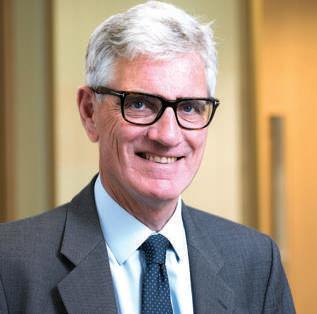
1 minute read
Environment and equipment
£2.8M Spent on projects to improve environments and pay for specialist equipment
uclhcharity.org.uk/does/environment-and-equipment and so can be conducted at the
Advertisement
New equipment to support blood diseases research
We are part funding a flow cytometer to improve the treatment of non-malignant blood diseases, namely Thrombocytopenic Thrombotic Purpura (TTP) and Immune Thrombocytopenia (ITP). The equipment will allow research staff to be self-sufficient with immediate access to run patient samples with the aim to deliver more specific and personalised treatment, reducing unnecessary therapies and by predicting effective care plans, avoiding side effects.
Making the children and young people’s emergency department more welcoming
We are funding a project to transform the current environment of the children and young people’s department at UCLH. The use of friendly signage, wall art, new colour scheme and information slides will create a unique age-appropriate, welcoming space. This will help to provide a distraction and alleviate anxieties of the many patients, families and carers who visit the department each year. The Design Council’s research indicate that design solutions have also reduced non-physical hostility and frustration of waiting times and thus improved
Gold standard swallow assessments for stroke patients
We are funding Fibreoptic Endoscopic Evaluation of Swallow (FEES) equipment on the Hyper Acute Stroke Unit (HASU). This gold standard equipment assesses the risk of swallowing disorder and aspiration (when food and or fluids go to the lungs not the stomach). Both of these conditions can cause complications and lead to poor outcomes and reduced quality of life. Currently not available to HASU patients, FEES is preferable to other methods because it is portable patient experience.
bedside on patients unable to leave the ward. It is also immediate so swallowing problems are picked up quickly, is repeatable (with no radiation exposure) and can be done over a meal time. Accurate, timely assessment using such equipment can significantly improve outcomes and allows for tailored, individual eating and drinking protocols.






